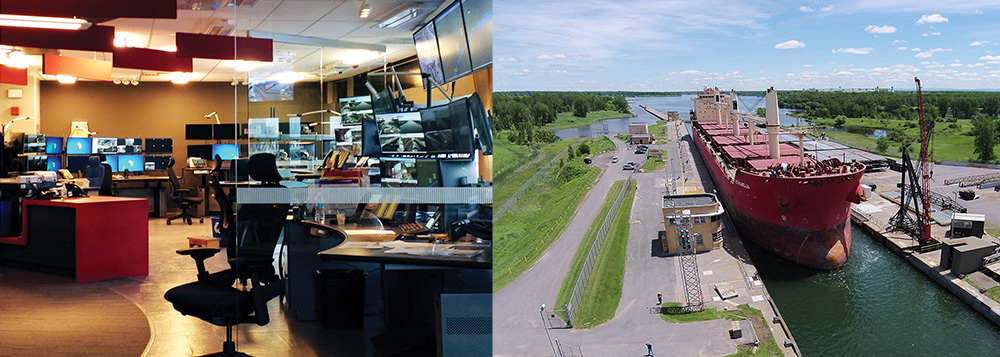Management of the Seaway
The Great Lakes/St. Lawrence Seaway was built as a binational partnership between the U.S. and Canada, and continues to operate as such.
Administration of the system is shared by two entities, Great Lakes St. Lawrence Seaway Development Corporation in the U.S., a federal agency within the U.S. Department of Transportation, and The St. Lawrence Seaway Management Corporation in Canada, a not-for-profit corporation (ownership of the Canadian portion of the Seaway remains with the Canadian federal government.)
Entities
Great Lakes St. Lawrence Seaway Development Corporation is a wholly owned government corporation created by statute May 13, 1954, to construct, operate and maintain that part of the St. Lawrence Seaway between the Port of Montreal and Lake Erie, within the territorial limits of the United States. Trade development functions aim to enhance Great Lakes/St. Lawrence Seaway System utilization without respect to territorial or geographic limits.
The mission of the Corporation is to serve the U.S. intermodal and international transportation system by improving the operation and maintenance of a safe, reliable, environmentally responsible deep-draft waterway, in cooperation with its Canadian counterpart. The GLS also encourages the development of trade through the Great Lakes Seaway System, which contributes to the comprehensive economic and environmental development of the entire Great Lakes region.
The GLS headquarters staff offices are located in Washington, D.C. Operations are located at the two U.S. Seaway locks (Eisenhower and Snell) in Massena, N.Y.
The St. Lawrence Seaway Management Corporation is a not-for-profit corporation responsible for the safe and efficient movement of marine traffic through the Canadian Seaway facilities, which consists of 13 of the 15 locks between Montreal and Lake Erie. The Corporation plays a pivotal role in ensuring that the waterway remains a safe and well-managed system, which it shares with its American counterpart, Great Lakes St. Lawrence Seaway Development Corporation.
The Corporation’s mandate promotes efficiency and responsiveness to the needs of shipping interests, ports, marine agencies, and provincial and state jurisdictions.
The two Seaway entities coordinate operational activities particularly with respect to rules and regulations, overall day-to-day operations, traffic management, navigation aids, safety, environmental programs, operating dates, and trade development programs. The unique bi-national nature of the System requires 24-hour, year-round coordination between the two Seaway entities.






